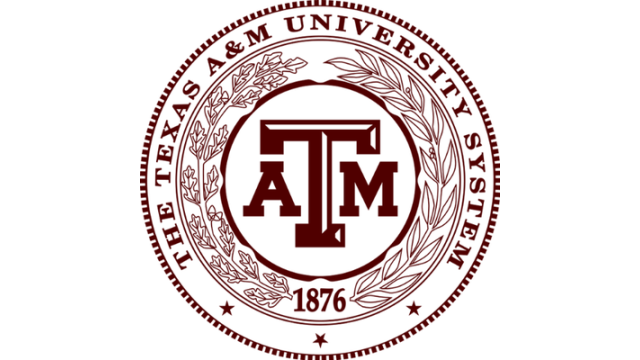
Thursday’s quarterly meeting of the Texas A&M system board of regents included donating land for two new exhibits at the Bush Library and Museum.
The land will accommodate the Union Pacific 4141 train engine that was used in the George H.W. Bush funeral, and a future building to house a retired Marine One helicopter.
The board also approved two multi-million dollar construction projects in Brazos County.
At the RELLIS campus, the regents approved proceeding with building what is described as the world’s largest detonation research facility that is located on a university campus. Construction of the $5 million dollar project is scheduled to start this September and would be completed in April of next year.
Click HERE to read and download more information about the detonation research facility.
On the flagship campus, the regents amended the capital plan to add a nearly $10 million dollar renovation of the first and second floors of the Heep Laboratory Building. This would create flex space that is currently not available for biology research and similar disciplines. Construction would start this August and take one year to complete.
Click HERE to read and download more information about the Heep building project.
Three other real estate projects approved by the regents following an executive session were (1) leasing multiple office suites in the former Westinghouse building along the east side of the freeway near the Academy store, (2) changing control of an unidentified student housing project on the flagship campus from a ground lease to ownership, and (3) leasing space in the Bryan Medical Center on East 29th for the health science center.
News release from the Texas A&M system regarding the land donation to the Bush Library and Museum:
The historic Union Pacific No. 4141 Engine, a locomotive painted to match Air Force One, will arrive here this spring for a permanent home at the George H.W. Bush Presidential Library and Museum.
On Thursday The Texas A&M University System Board of Regents approved $1 per-year lease, essentially donating two acres to expand the grounds of the museum. Eventually the acreage will house an exhibit area for a Marine One helicopter as well as the locomotive. They are to be part of a multi-million dollar expansion being planned by the George & Barbara Bush Presidential Foundation.
“Texas A&M is proud to host these icons of the Bush presidency,” said Chancellor John Sharp. “We do everything we can to keep alive the memory and accomplishments of this wonderful president and public servant.”
No. 4141 Engine led the Bush funeral train from Houston to College Station in December 2018, when the former president was laid to rest here alongside First Lady Barbara Bush.
A year later, Union Pacific announced it would donate the locomotive to the museum. The railroad had surprised Bush in 2005 by painting it to resemble Air Force One in connection with a train exhibit there.
Former CEO of Union Pacific Dick Davidson was instrumental in creation of No. 4141. He and his wife Trish have made a significant lead gift to jumpstart private fund-raising for the museum expansion.
“It is fitting this significant piece of history will now make its permanent home at the Bush Center at Texas A&M,” said Max Angerholzer, CEO, George & Barbara Bush Foundation. “The train meant the world to President Bush. We are grateful to the entire Union Pacific team, especially Chairman and CEO Lance Fritz, for this special gift.”
The COVID 19 pandemic has slowed plans associated with the museum expansion, which is expected to also include new meeting space and a restaurant. Foundation officials want to complete the project in time for a celebration they plan in 2024 for the 100th anniversary of Bush’s birth.
Pandemic-related precautions will delay any public celebration associated with this spring’s arrival of No. 4141 Engine. Due to security precautions, the arrival date will not be announced.
The arrival of Marine One is further in the future, Angerholzer said. Marine One is the call sign for any Marine Corps helicopter carrying the president. Some of the helicopters are being retired, which takes several months in part to remove the classified technology aboard.
In 2005 Bush said that if No. 4141 Engine had been around during his presidency, “I might have left Air Force One behind” and ridden the rails more often.
He had recalled fondly riding and sleeping on trains as a boy. Trains also carried Bush to his service as a naval aviator in World War II and back home. He also used trains for “whistle stop” campaign events during his presidential runs in 1988 and 1992.
“Union Pacific is proud and honored that the UP 4141 is one step closer to being on permanent display at the Bush Library,” said Scott Moore, the Chief Administrative Officer and Senior Vice President of Union Pacific. “President Bush’s love of trains is well known and we are pleased that we can be a part of honoring his legacy.”
News release from the Texas A&M system regarding the RELLIS campus detonation research facility:
A new Detonation Research Test Facility (DRTF) will be built and opened next year on the RELLIS Campus, adding to its array of capabilities for solving complex global problems.
Dr. Elaine Oran, a world authority on the physics and chemistry of explosions, will lead a team at the DRTF examining how flammable gases and other materials interact and sometimes — though not always — detonate on a massive scale.
The discoveries could help prevent horrific mining, industrial and home accidents, predict the path of wildfires and make high-speed engines run more efficiently. It even could improve the understanding of supernovas.
The Texas A&M University System Board of Regents on Thursday approved a plan to invest $5 million for construction of what is likely to be the largest university-based facility of its kind in the world.
The centerpiece is a 2-meter diameter, 200-meter-long detonation tube that is made of steel walls at least 3/4-inch thick. It will sit on concrete supports two feet above ground in a secure, isolated and open area near the runways of the former Air Force base.
Funding for the facility is split evenly between the Governor’s University Research Initiative, which Gov. Greg Abbott began in 2015, and the Chancellor’s Research Initiative, which Chancellor John Sharp began in 2013.
“This investment is bound to lead to remarkable breakthroughs,” Sharp said. “We’ll make Texas oil, gas and chemical industries, and the entire world safer from accidental explosions.”
The governor’s and chancellor’s research initiatives were designed to attract more top faculty to Texas, and they both played a role in the 2019 hiring of Oran. She is an aerospace engineering professor and the O’Donnell Foundation Chair VI in the Texas A&M College of Engineering.
She came from the University of Maryland and previously served as the Senior Scientist for Reactive Flow Physics at the U.S. Naval Research Laboratory. There she led a research team that used a smaller-scale detonation facility in the mountains of eastern Pennsylvania (now closed) to measure how gases, liquids and solids interact and sometimes cause explosions. Researchers call these issues “reactive flow problems.”
Oran pioneered computational technology to address reactive flow problems, unifying concepts in chemistry, physics, engineering and computer science in a new methodology.
“We’re looking at explosions: the physics that cause accidental explosions and how to stop them; or in the case of high-speed engines, how to promote them quickly and control them,” Oran said. “It’s all about safety, control and advancing knowledge.”
She said she was attracted to Texas and Texas A&M by the willingness to invest in a detonation facility that could “get us to the next level of discovery and information.”
“It was just an amazing opportunity,” Oran said. “It’s the kind of thing you really couldn’t say no to.”
The DRTF will have a protective earth berm between the steel detonation tube and a control building for researchers. At the opposite end, a concrete wall and berms will surround a muffler pipe to keep the noise down.
The facility will be near two other testing ranges being assembled for the George H.W. Bush Combat Development Complex (BCDC), in partnership with Army Futures Command, to advance warfare-related technology. One BCDC range is an enclosed highly instrumented tube for testing lasers and other materials traveling at hypersonic speed; the other is an outdoor range for experimenting with high-tech combat vehicles and their communication systems.
While the detonation facility is not part of the BCDC per se, discoveries there could have applications for the Department of Defense.
Detonation-related discoveries also could advance the work of the Mary Kay O’Connor Process Safety Center, which is operated by the Texas A&M Engineering Experiment Station (TEES) to promote safety in chemical processes in the oil, gas and pharmaceutical industries.
The safety center was established in memory of an employee killed in a 1989 explosion at the Phillips Petroleum Complex in Pasadena, Texas. The initial blast registered 3.5 on the Richter scale, and an ensuing conflagration took 10 hours to control. In all, 23 employees died and 314 were injured.
The DRTF will be operated by TEES as well. It will join a wide array of new, cutting-edge facilities at the RELLIS Campus on the western edge of Bryan, including the BCDC, the Center for Infrastructure Renewal, the Texas A&M Transportation Institute and the SecureAmerica Institute.
